
Gwanghwamun Gate: The Majestic Entrance to Seoul's History
Explore the grandeur of Gwanghwamun Gate, a historical landmark that embodies Seoul's rich cultural heritage and architectural beauty.
Gwanghwamun Gate stands as a grand symbol of Seoul's rich history and cultural heritage. As the main gate of Gyeongbokgung Palace, this historical landmark captivates visitors with its stunning architecture and vibrant surroundings, making it a must-visit for any traveler in South Korea.
A brief summary to Gwanghwamun Gate
- 12 Hyoja-ro, Jongno District, Seoul, 110-050, KR
- +822-3700-3900
- Monday 12 am-12 am
- Tuesday 12 am-12 am
- Wednesday 12 am-12 am
- Thursday 12 am-12 am
- Friday 12 am-12 am
- Saturday 12 am-12 am
- Sunday 12 am-12 am
Local tips
- Visit early in the morning to avoid crowds and enjoy a peaceful experience.
- Check the schedule for the changing of the guard ceremony and arrive a bit early for the best view.
- Wear comfortable shoes for walking, as there are many nearby attractions to explore.
- Consider visiting during the evening to see the gate beautifully illuminated.
- Take advantage of the nearby cafes and restaurants to enjoy traditional Korean food after your visit.
Getting There
-
Car
If you are traveling by car from anywhere in Gyeonggi Province, head towards Seoul. Use the Gyeongin Expressway (also known as the Incheon-Seoul Expressway) if you are coming from the west or the Yongin-Seoul Expressway if you are coming from the south. Once you reach the city limits of Seoul, follow signs for Jongno District. Use GPS navigation to guide you to the address 12 Hyoja-ro, Jongno District, Seoul. There is limited parking available in the area, so be prepared for potential parking fees, which can range from 1,000 to 3,000 KRW per hour.
-
Public Transportation (Subway)
To reach Gwanghwamun Gate via public transportation, take the subway to Gwanghwamun Station on Line 5 (the Purple Line). Once you arrive at Gwanghwamun Station, take Exit 1. After exiting, you will see Gwanghwamun Gate directly ahead. The cost of a subway ticket varies depending on your starting location but typically ranges from 1,250 to 2,000 KRW for a single journey.
-
Public Transportation (Bus)
If you prefer to take the bus, you can catch various buses that stop near Gwanghwamun Gate. Look for numbers 102, 171, 406, or 500. You can board these buses from major bus stops throughout Gyeonggi Province. The bus fare is generally around 1,250 KRW with a T-money card. Make sure to get off at the Gwanghwamun stop, which is just a short walk from the gate.
Discover more about Gwanghwamun Gate
Iconic landmarks you can’t miss
Heungnyemun Gate
0.1 km
Explore the historic Heungnyemun Gate, a stunning entrance to Gyeongbokgung Palace in Seoul, showcasing traditional Korean architecture and rich cultural history.

Bigag
0.4 km
Explore the captivating Bigag in Jongno District, where history, culture, and culinary delights come together in the heart of Seoul.

Yeongchumun (West Gate)
0.4 km
Explore Yeongchumun, the West Gate of Gyeongbokgung Palace—an iconic historical landmark where Korea's royal history comes to life.

Jagyeongjeon
0.5 km
Explore the exquisite architecture and serene gardens of Jagyeongjeon, a royal landmark that embodies Korea's rich cultural heritage.

Hanok-gil (Insadong-gil)
0.6 km
Discover the enchanting charm of Hanok-gil, a historic street in Seoul filled with traditional architecture, art galleries, and authentic Korean cuisine.

Insadong-gil
0.7 km
Discover the vibrant culture of Korea at Insadong-gil, where art, traditional tea, and delicious street food await in the heart of Seoul.

Insadong-gil Street
0.7 km
Discover the vibrant culture, art, and cuisine of Seoul at Insadong-gil Street, a must-visit destination for every traveler.

Jongno in Joseon Dynasty Well
0.7 km
Explore the Jongno in Joseon Dynasty Well, a serene historical landmark in Seoul that showcases the ingenuity and culture of the Joseon Dynasty.

Gongpyeong Historic Sites Museum
0.7 km
Unearth the history of Seoul at Gongpyeong Historic Sites Museum, where ancient artifacts and stories come to life in an engaging heritage experience.

Cheonggye Plaza
0.8 km
Explore the charming Cheonggye Plaza, where nature meets urban life in the heart of Seoul, offering stunning views and cultural experiences.

Cheonggyecheon
0.8 km
Explore the breathtaking Cheonggyecheon in Seoul, where nature meets urban life in a serene park perfect for leisurely strolls and cultural experiences.

Neungseongwi Palace site
0.8 km
Explore the Neungseongwi Palace site in Seoul, a historical landmark showcasing Korea's royal heritage and stunning architecture amidst serene gardens.

Seoul Museum of History
0.8 km
Explore the evolution of Seoul at the Seoul Museum of History, where the past meets the present through engaging exhibits and stunning city views.

Insadong Culture Street
0.8 km
Explore Insadong Culture Street, where tradition meets modernity in a vibrant cultural tapestry of art, food, and heritage in the heart of Seoul.

복정우물(Bokjeong Well)
0.8 km
Uncover the historical allure of Bokjeong Well, a serene landmark in the heart of Seoul that showcases the city's rich cultural heritage.

Unmissable attractions to see
Gwanghwamun Woldae (Elevated Platform)
0.0 km
Discover the historical essence of Seoul at Gwanghwamun Woldae, where tradition and modernity converge in a picturesque setting.

National Palace Museum of Korea
0.2 km
Discover Korea's royal heritage at the National Palace Museum of Korea, featuring exquisite artifacts and a captivating journey through history.

Dongsipjagak
0.2 km
Experience the historical beauty of Dongsipjagak, a must-visit landmark in Seoul that showcases Korea's rich cultural heritage.

National Museum of Korean Contemporary History
0.2 km
Discover Korea's modern heritage at the National Museum of Korean Contemporary History, where history comes alive through captivating exhibits and engaging narratives.

Seoul Hanbok Cafe
0.3 km
Discover the charm of Korean tradition at Seoul Hanbok Cafe, where coffee meets culture in a cozy ambiance.

Sejong-ro Park
0.3 km
Experience the serene beauty of Sejong-ro Park in Seoul, an urban oasis blending nature, culture, and tranquility for every traveler.

Geunjeongjeon
0.3 km
Explore the grandeur of Geunjeongjeon, the main throne hall of Gyeongbokgung Palace, a cultural landmark steeped in Korea's royal heritage.

Hanboknam Gyeongbokgung hanbok rental shop
0.3 km
Immerse yourself in Korea's rich tradition by renting exquisite hanboks at Hanboknam Gyeongbokgung, a must-visit for every tourist.
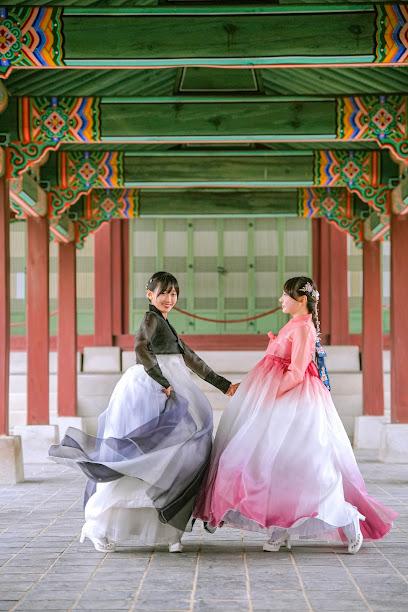
Statue of King Sejong the Great
0.3 km
Discover the rich history of Korea at the Statue of King Sejong the Great, a magnificent tribute to the beloved monarch and creator of the Korean alphabet.
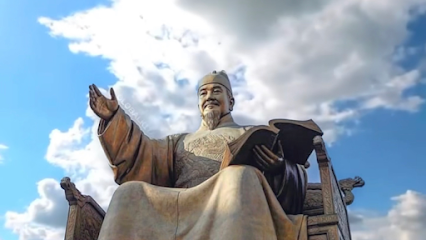
Daelim Museum
0.4 km
Discover contemporary creativity at Daelim Museum, a must-visit modern art destination in the heart of Seoul's Jongno District.

Sejong Center for the Performing Arts
0.4 km
Experience the cultural heartbeat of Seoul at the Sejong Center for the Performing Arts, a hub for art, music, and unforgettable performances.

Gwanghwamun Square
0.4 km
Discover the historical essence of Seoul at Gwanghwamun Square, showcasing Korea's rich culture and heritage through its iconic monuments and vibrant public space.

Gyeongbokgung Palace
0.4 km
Explore Gyeongbokgung Palace, Seoul's iconic cultural landmark, showcasing the beauty of Korea's royal history and stunning architecture.
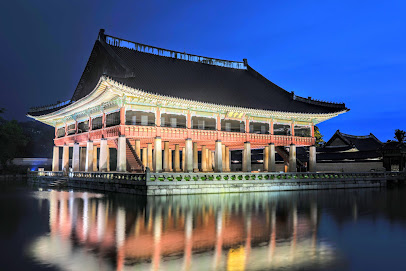
Gwanghwamun Hanok House
0.4 km
Discover the flavors of Korea in a traditional Hanok setting at Gwanghwamun Hanok House, an exceptional dining experience in Seoul.

Sejong Village Food Street
0.4 km
Experience the vibrant flavors of Korea at Sejong Village Food Street, a culinary gem in Jongno District, Seoul.

Essential places to dine
Dugahun
0.3 km
Experience authentic Italian flavors at Dugahun in Jongno District, Seoul – where culinary excellence meets vibrant atmosphere.

Korean Folk Village
0.6 km
Discover Korea's rich heritage at Korean Folk Village – an open-air museum showcasing traditional life with performances, crafts, and delicious cuisine.
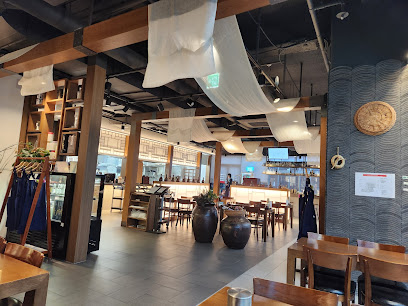
The Market Kitchen
0.6 km
Explore culinary excellence at The Market Kitchen in Seoul with an expansive buffet featuring global flavors and local specialties.

Akira Back
0.6 km
Experience culinary artistry at Akira Back in Seoul – where Canadian flavors meet Korean inspirations in a fine dining setting.

The Restaurant
0.6 km
Experience the perfect fusion of Haute French and Italian cuisine at The Restaurant in Seoul's Jongno District.

Insadong Geujip
0.7 km
Experience authentic Korean flavors at Insadong Geujip - where tradition meets culinary excellence in Seoul's historic district.

Ha-Yeon Korean Cuisine Restaurant
0.7 km
Savor authentic Korean traditional full-course meals at Ha-Yeon in Jongno-gu, where every dish tells a story.

Doma Insadong
0.8 km
Discover authentic Korean flavors at Doma Insadong in Seoul's historic Insadong district – a perfect blend of tradition and taste.

PyeongYang Gogitjip
0.8 km
Experience authentic Korean BBQ at PyeongYang Gogitjip in Jongno District, where flavors meet tradition in every grilled bite.

Sanchon
0.8 km
Discover authentic Korean vegetarian cuisine at Sanchon in Seoul's historic Insadong district—an unforgettable dining experience steeped in tradition.

Insadong gukbap
0.9 km
Experience authentic Korean gukbap at Insadong Gukbap in Seoul - where tradition meets flavor in every bowl.

Yangbandaek
0.9 km
Experience authentic Korean flavors at Yangbandaek in Jongno District, where traditional cuisine meets warm hospitality.

Korean Restaurant Doore
0.9 km
Experience the essence of traditional Korean dining at Doore - where every dish tells a story.

Tteok Salon Insadong
0.9 km
Experience authentic Korean rice cakes at Tteok Salon Insadong - a culinary gem in Seoul's historic Insadong district.

Tteulag
0.9 km
Discover Tteulag: A Culinary Haven in Seoul's Insadong District Offering Authentic Korean Flavors and Warm Hospitality.

Markets, malls and hidden boutiques
YG Place Insa Branch
0.6 km
Explore the vibrant world of K-pop at YG Place Insa Branch, Seoul's premier music store, offering exclusive merchandise and a taste of Korean music culture.

MSK SHOP / Cafe Coin (Manado disk Shop)
0.7 km
Explore the essence of Korean fashion at MSK SHOP / Cafe Coin, where unique styles and exceptional quality meet in the heart of Seoul.

세령 (Korean HandMade Highclass Traditional Accessory)
0.7 km
Discover 세령: Your Destination for Exquisite Handmade Traditional Accessories in Seoul, Celebrating Korean Artistry and Culture.

Moony Gongbang Music Box (무늬공방 도자기 오르골)
0.7 km
Discover the magic of handcrafted music boxes at Moony Gongbang in Seoul's Jongno District, where melodies and memories intertwine beautifully.

Kukje Embroidery
0.7 km
Discover the artistry of Korean embroidery at Kukje Embroidery, a unique gift shop in the heart of Seoul's Insa-dong district.

Ssamziegil
0.7 km
Explore the artistic heart of Seoul at Ssamziegil, where traditional crafts meet modern shopping in a vibrant cultural hub.

Object
0.8 km
Explore a charming souvenir store in Jongno District, Seoul, offering unique gifts and local crafts that reflect Korea's rich culture and heritage.

Etro Boutique
0.8 km
Discover the elegance of Italian fashion with unique prints and luxurious fabrics at Etro Boutique in Seoul, a must-visit for style enthusiasts.

Korean National Souvenir Center
0.8 km
Explore the Korean National Souvenir Center for unique handcrafted gifts and authentic cultural experiences in the heart of Seoul.

Insadong Vintage
0.8 km
Explore the rich tapestry of fashion history at Insadong Vintage, where each unique piece brings a story from the past to your wardrobe.

Yeon
0.9 km
Discover Yeon, a charming gift shop in Seoul, offering unique handmade products that reflect Korea's rich cultural heritage.

Insadong Bells and Wind Chimes Shop
0.9 km
Explore the enchanting Insadong Bells and Wind Chimes Shop in Seoul, a treasure trove of handcrafted gifts that capture the spirit of Korean culture.

인사1길
1.0 km
Explore the charm of Korean craftsmanship at Insa1-gil, a unique home goods store in Seoul's historic Insa-dong district.

AEOL SSIGU MADANG
1.0 km
Explore vintage treasures at AEOL SSIGU MADANG in the heart of Seoul's Insa-dong, where retro fashion meets a vibrant cultural scene.

Damul
1.0 km
Explore Damul in Insa-dong, where traditional Korean fashion meets contemporary style in a vibrant shopping experience.

Essential bars & hidden hideouts
Tender Bar
0.5 km
Experience Seoul's nightlife at Tender Bar, a cocktail haven offering expertly crafted drinks and a vibrant atmosphere in Jongno District.

Cobbler
0.5 km
Experience the art of mixology at Cobbler, a premier cocktail bar in Seoul's Jongno District, where creativity and flavor intertwine.

찰스 H Charles H.
0.6 km
Discover the perfect blend of elegance and modernity at Charles H. in Seoul, a sophisticated bar and dining experience.

Bar Cham
0.7 km
Experience the art of mixology at Bar Cham, a cozy cocktail bar in Seoul's Jongno District, offering unique drinks and a warm ambiance.

Bar Pomme
0.7 km
Discover the exquisite cocktails and vibrant atmosphere at Bar Pomme, a must-visit cocktail bar in Seoul's Jongno District.

Tongkeun Imo
0.9 km
Discover the lively essence of Seoul's nightlife at Tongkeun Imo, a cozy bar in Insa-dong offering unique local drinks and a welcoming atmosphere.
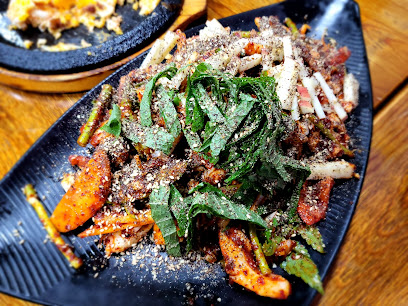
Seochon Dokkaebi
0.9 km
Discover Seochon Dokkaebi, a vibrant bar in Seoul that blends traditional Korean culture with modern nightlife, perfect for an unforgettable experience.

OB's Cabin
0.9 km
Experience the vibrant nightlife of Seoul at OB's Cabin, a live music bar where local talent shines in an intimate setting.

마당쇠호프
0.9 km
Discover the local charm of Seoul at 마당쇠호프, a popular bar in Insa-dong offering delicious drinks and a vibrant social atmosphere.

Tou
0.9 km
Experience the authentic taste of Korea at Tou, a Korean rice wine pub in Jongno District, where culture and flavor come alive.

Insadong Nogari
0.9 km
Experience the vibrant nightlife of Seoul at Insadong Nogari, a traditional bar offering delicious drinks and a welcoming atmosphere in the heart of Insadong.

Jongnoilbeonzi
0.9 km
Discover the vibrant nightlife of Jongnoilbeonzi, a perfect bar to unwind in the heart of Seoul's cultural district, Insa-dong.

I Love Pub
1.0 km
Experience the vibrant nightlife at I Love Pub in Jung-gu, Seoul, where friendly service meets a lively atmosphere and delicious drinks.

Haejeo
1.0 km
Discover Haejeo, a unique bar in Insa-dong, Seoul, where traditional culture meets modern mixology for an unforgettable experience.

레벤호프
1.0 km
Immerse yourself in Seoul's nightlife at 레벤호프, where traditional charm meets modern mixology in the heart of Insa-dong.




